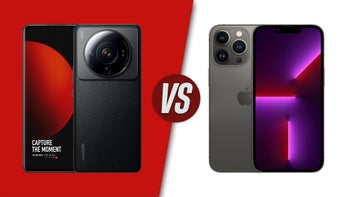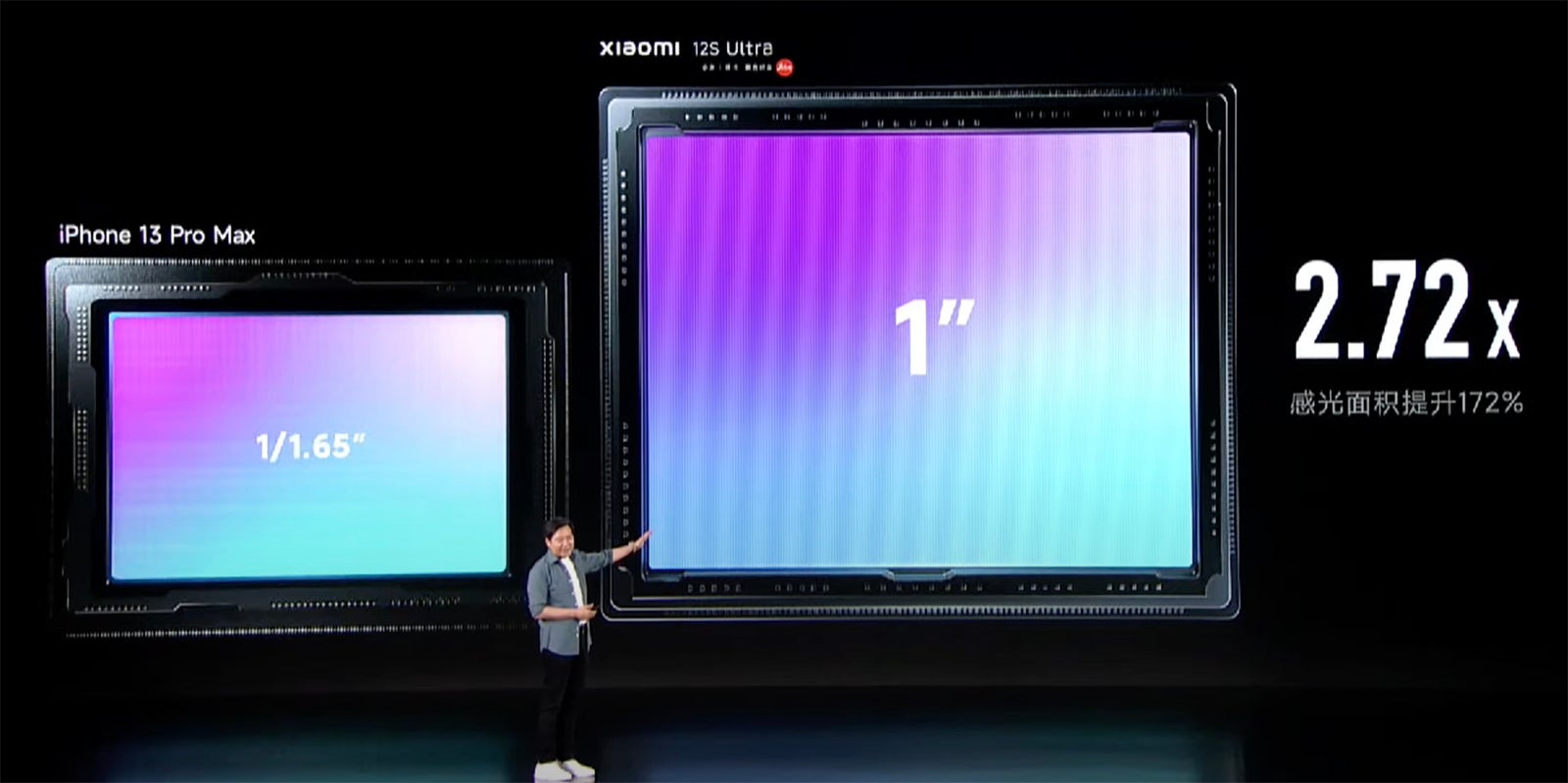Xiaomi 12S Ultra vs iPhone 13 Pro Max
We may earn a commission if you make a purchase from the links on this page.

Intro
The new flagship Xiaomi 12S Ultra stirs a bit of a revolution in the smartphone camera space with a 1" sensor that we are used to seeing in prosumer cameras rather than phones. But can it actually outperform the popular iPhone 13 Pro Max?
In this direct comparison, we look at the camera quality, but also compare these two in terms of their performance and overall speed. The Xiaomi 12S Ultra is equipped with the latest Snapdragon 8+ Gen 1 processor coupled with an innovative head dissipation system that might just rival the Apple A15 Bionic chip inside the iPhone.
So what are the advantages that each of these phones have and which one should you go for? And has Xiaomi finally made the "iPhone killer"? Let's take a look.
Xiaomi 12S Ultra vs iPhone 13 Pro Max in a nutshell:
- Curved screen on Xiaomi vs flat on iPhone
- Top notch processors, but faster RAM on Xiaomi
- Xiaomi uses bigger camera sensor
- iPhone is the battery champ
- Much faster charging speeds on Xiaomi
- Xiaomi costs a bit less
Table of Contents:
iPhone 13 Pro Max pros and cons
Design and Display Quality
Big screen party
These two are both big and well-constructed premium phones and you can tell. The Xiaomi uses a leather-like textured finish on the back that you rarely see these days, and this gives it a bit of a vintage camera feel and just... gives it character. The iPhone, on the other hand, is your familiar glass and metal sandwich, with a shiny stainless steel used for the frame.
At 6.7 inches, both are clearly extra large phones, but the iPhone is a bit heavier too.
Both have IP68 dust and water resistance rating, a good thing to have for the occasion that you drop your phone in water or happen to get under the rain.
The screen quality is also top-notch on both. We have 6.7-inch sized OLED panels with variable refresh rate (the Xiaomi varies from 1Hz to 120Hz, while the iPhone goes from 10Hz to 120Hz). The two also get very bright, but it's the Xiaomi that is a bit extra with 1,500 nits of peak brightness vs 1,200 nits on the iPhone, making the Xiaomi a bit easier to use outdoors on a sunny day.
Oh, and you have a slightly curved screen on the Xiaomi versus a completely flat one on the iPhone.
As most Android phones, the 12S Ultra uses an in-screen fingerprint scanner, while the iPhone 13 Pro Max relies on Face ID for biometrics.
Performance and Software
Snapdragon vs Bionic
The Ultra comes with the latest Qualcomm Snapdragon 8+ Gen1 processor and that chip is manufactured using 4nm technology. This compares to an Apple A15 Bionic processor, a chip that has remained the fastest in the industry, but also admittedly it is built on the less efficient 5nm tech.
Xiaomi also uses LPDDR5 RAM vs the slower LPDDR4X RAM type on the iPhone.
Finally, Xiaomi spoke a lot about the new heat dissipation system used in this phone that uses a leaf-like network of tubes to help hot air escape the phone more efficiently.
Expect a lot more detail on the actual performance of this cool solution once we test the Xiaomi 12S Ultra soon.
On the software side, you have Android 12 with MIUI 13 on the Xiaomi vs iOS 15 on the iPhone. MIUI has borrowed some elements from iOS and will look quite familiar to Apple users too.
Apple does have the upper hand with updates, though, as iPhones typically get between 5 and 6 years of major OS updates. No Android phones can match that.
- Xiaomi - 3 years of major OS updates, 4 years of security updates
- Apple - 5-6 years of major OS updates, 5-6 years of security updates
Camera
A tale of camera sensors

Xiaomi CEO shows how much larger camera sensor is on 12S Ultra vs iPhone
That gigantic camera system on the Xiaomi is no coincidence and is there thanks to a new 1" sensor powering the main camera. This size of a camera sensor is found on prosumer dedicated cameras, and bringing it to a smartphone amounts to a sort of a camera revolution.
Here is how that compares against the iPhone:
| Specs | Xiaomi 12S Ultra | iPhone 13 Pro Max |
|---|---|---|
| Main Camera | 50MP, 23mm, f/1.9 lens, 1" sensor | 12MP, 26mm, f/1.5 lens, 1/1.65" sensor |
| Ultra-wide | 48MP, 13mm, f/2.2 lens, 1/2" sensor | 12MP, 13mm, f/1.8 lens |
| Telephoto | 48MP, 5.2X zoom, 120mm, f/4.1, 1/2" sensor | 12MP, 3X zoom, 77mm, f/2.8 |
| Front Camera | 32MP | 12MP |
Early samples show Xiaomi adopted some beautiful color science from the newly-founded partnership with Leica and it has a number of high-quality filters in the camera app. The iPhone on its part has Photographic Styles that you can customize yourself.
We will be diving deeper on photo and video quality once we get to test the phones very soon, so stay tuned for that.
Audio Quality and Haptics
The iPhone 13 series set a bit of a benchmark for smartphone audio with boomier bass than a typical phone, but the Xiaomi also comes well-equipped with a dual stereo speaker system of its own, and one fine-tuned by Harman Kardon, if we were to trust the marketing.
Stick around for our real-world impressions from these two speakers that are coming soon.
Also, don't forget that neither of these phones have a 3.5mm headphone jack.
The iPhone for years has had the Taptic Engine, its powerful vibration motor that provides excellent haptic feedback (and will now be used in typing with iOS 16). We are yet to see if Xiaomi can match it with its own solution.
Battery Life and Charging
Can Xiaomi challenge the iPhone?
iPhones were never the phones with the biggest battery, in fact, it was quite the opposite. Still, they get solid battery numbers. And the iPhone 13 Pro Max is very typical in that regard. It only has a 4,352mAh battery yet it is the unofficial flagship battery champ of 2021 and 2022.
Of course, this is all due to iOS battery and stand-by optimizations that really make a lot of difference, and you cannot just expect any and every Android phone with a similarly sized battery to last as long. The Xiaomi, on its part, has a 4,860mAh battery.
We will be updating you with real-world battery tests soon, so stay tuned.
On the charging front, however, Apple has been behind for years. The iPhone 13 Pro Max unofficially supports 27W max charging speeds, which sounds paltry in comparison to the 67W charging offered on the Xiaomi.
Real life shows the difference these numbers make: it takes around 2 hours to fully charge the iPhone battery, and it only takes about 41 minutes to fully charge the Xiaomi.
And the difference might be even worse for wireless charging: an iPhone takes more than 3 hours, while the Xiaomi charges up in just a bit north of 50 mintues (with a compatible charger).
The Xiaomi also has reverse wireless charging that you can use to top-up smaller gadgets like watches or headphones, a feature missing on the iPhone.
Specs Comparison
And here is a quick overview of the specs of these two in a table. Don't forget that we have a deeper 1v1 Xiaomi 12S Ultra vs iPhone 13 Pro Max specs comparison here.
| Specs | Xiaomi 12S Ultra | iPhone 13 Pro Max |
|---|---|---|
| Size and Weight | 163.17 x 74.92 x 9.06mm, 225g | 160.8 x 78.1 x 7.65 mm, 240g |
| Display | 6.73" OLED, 1440p, 1-120Hz 1500 nits max brightness | 6.7" OLED, 1284p, 10-120Hz ProMotion 1200 nits max brightness |
| Processor | Snapdragon 8+ Gen1, 4nm | Apple A15 Bionic, 5nm |
| RAM and Storage | 8GB+256GB 12GB+256GB 12GB+512GB LPDDR5 RAM, UFS 3.1 storage | 6GB+128GB 6GB+256GB 6GB+512GB 6GB+1TB LPDDR4X RAM, NVMe storage |
| Software | Android 12 with MIUI 13 | iOS 15 |
| Cameras | 50MP wide camera, 23mm, f/1.9 aperture, 1" sensor (Sony IMX989) 48MP ultra-wide camera, 13mm, f/2.2 aperture, 1/2" sensor (IMX586) 48MP 5.2X zoom camera, 120mm, f/4.1, 1/2" sensor (IMX586) | 12MP wide camera, 26mm, f/1.5 aperture 12MP ultra-wide camera, 13mm, f/1.8 aperture 12MP 3X zoom camera, 77mm, f/2.8 aperture |
| Battery Size | 4,860 mAh | 4,352 mAh |
| Charging Speeds | 67W wired 50W wireless 10W reverse wireless | 27W wired 15W wireless |
| Price | from $900 in China | from $1,100 |
The Xiaomi does appear to have a bit of a technical advantage, don't you think?
Summary and Final Verdict
So, at the end of the day, it boils down to your preference: the Xiaomi with its impressive new camera system and open Android platform looks like a great tool for an enthusiast photographer, while the iPhone with its familiar iOS and ecosystem integrations with iMessage, Apple Watch, AirPods and other gadgets might appeal to you just for its ease of use.
Which one would you go for?
















Things that are NOT allowed: